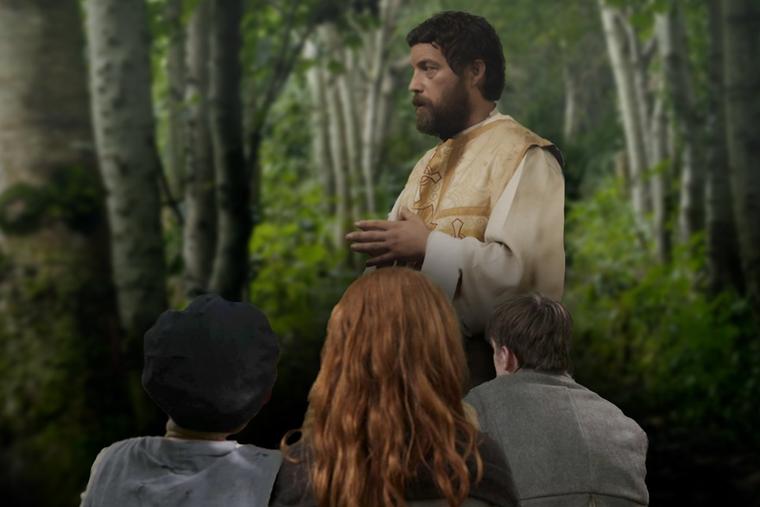EWTN Premieres ‘Faith of Our Fathers: The Story Behind the Story’
Irish actors relay how the film made their own history come alive for them today and why they are proud to have been a part of it.

Faith of Our Fathers, which premiered last year, is a dramatic retelling of the horrendous persecution endured by Irish Catholics and others who wouldn’t allow the Crown, beginning in 1530 with King Henry VIII, to dictate their faith tradition or tell them how to worship.
How bad was it? Find out when EWTN premieres Faith of Our Fathers: The Story Behind the Story, at 8 p.m. ET, Saturday, March 22, with an encore at 1:30 a.m. ET, Monday, March 24 (60 min.).
The history lessons are woven around scenes from the film, which help viewers understand, in a visceral way, what it must have been like to have lived in such hard times — and the lessons that might be learned from these persecutions.
Father John Hogan, postulator of the Father Willie Doyle Association and one of the narrators in this documentary, explains that Catholics did fight and even won some battles in 1691, which resulted in a treaty that restored their rights, but in the decades that followed these rights were slowly erased by the Penal Laws. Catholics could not openly attend Mass, serve in public office or go to Parliament.
“Catholics could not [even] pass on their property to their children,” Father Hogan said. “It had to be divided among all of their children.” As a result, Catholics, who owned 100% of the land in Ireland before the Reformation, owned only 14% of the land in Ireland by the end of the 17th century. As things got worse, they could be fined and/or imprisoned for attending Mass. “The aim,” according to Father Hogan, “was to crush the Catholic faith.”
But even this type of economic, legislative and criminal persecution pales in comparison to the persecution faced by the priests, who were hunted down like animals by the so-called “priest hunters.” Their “job” was to find priests in hiding or celebrating Mass and turn them into the authorities. People lived in fear because anyone could be priest hunters, who got special treatment if they told authorities where to find a priests.
“[T]he penalty for priests being caught for saying Mass depended on the level of persecution that was occurring under the severe Penal Laws,” says Father Hogan. “… During the periods of peace, priests quietly celebrated Mass in the chapels. There was no penalty whatsoever as long as they kept quiet. During the intense period … they could be arrested and fined. And, under the Banishment Act, if a priest had been caught in the country, he was fined, imprisoned, banished. If he came back and he was caught again, then he could be convicted … [of] … high treason, which could have led to execution.”
So priests became itinerant preachers, always on the run, always in hiding.
But why tell this story now?
Father Hogan observes that, in recent years, religious freedom, freedom of expression and free speech have increasingly come under assault. Have you noticed?
“We look to the past and see how our ancestors … endured, and the things … they did to protect themselves, to protect the Church [so they could] … practice their faith … [and] educate their children. And this is why the Penal Laws and the story of the Penal Laws are so relevant for us today.”
WATCH ON EWTN
Enjoy this new documentary, and then go to EWTN On Demand, https://bit.ly/40XSXMQ, to watch or rewatch the movie itself.
Michelle Laque Johnson is director of communications at the EWTN Global Catholic Network; this is a shortened adaption from an “EWTN Wings” weekly programming email. To have info about EWTN shows and specials sent directly to your inbox, sign up at EWTN.com/wings.















